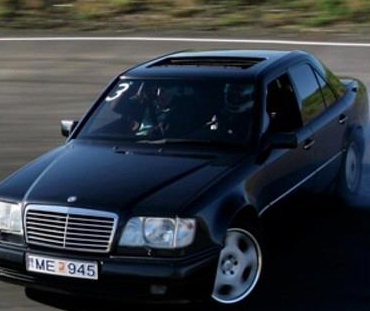This blog is the second in a series entitled Trials of a Forensic Toxicologist. These musings provide a more personal view of my courtroom experiences which now stretch over 38 years. I published the first blog in this series on August 20th 2013 which concerned wardrobe malfunctions. This blog continues in that vein and discusses some of the comical issues that occur oftentimes during cross-examination and expert testimony.
COURTROOM CONFIDENCE
Fifteen years ago, I attended criminal court in the small, sleepy town of Orillia, 80 miles north of Toronto. Orillia was made famous by the author and humorist Stephen Leacock as the town of “Mariposa”. At the time, I had been at the Centre of Forensic Sciences for about 24 years. The trial involved a driver, intoxicated by alcohol, who was involved in a single motor vehicle collision in which, fortunately, he was the only person injured. The injured driver was taken to hospital where a blood sample was collected for medical purposes and then seized by the police. I analysed the blood by headspace gas chromatography and, as I recall, the blood alcohol concentration (BAC) was 0.180 g/100mL.
I was in court to testify on my result, and the effects of this BAC on the ability to operate a motor vehicle. The trial started and, as usual, the forensic toxicologist was the last witness called by the crown prosecutor (I would often joke that I felt like the sanitation worker who cleaned up the mess left by the parade). I was sitting outside the courtroom writing abstracts and summaries of alcohol studies which I would later enter into my alcohol database. A young local lawyer looked into the courtroom through a window in the door and said to me;
“Is that Shelly Altman?”
“Yes” I replied.
“THE Shelly Altman?”
“Yes, he’s from Toronto” I said.
“He’s a top criminal lawyer, what is he doing here? And who are you?”
I explained to him that Mr. Altman was here to defend a drinking and driving case involving a blood sample and that I was the forensic toxicologist who analysed the blood and would soon testify.
“Aren’t you nervous about testifying? He’s a terrific trial lawyer and superb in cross examination,” the young lawyer said, “In fact I’m going to sit in the court right now and watch the cross.” He then opened the door and sat down on one of the hard benches in court.
Soon after, I was called into court, sworn in, and ruled as an alcohol expert by the judge. Shelly Altman had no objections (“He’s an expert”, Shelly said laconically) as I had testified in several cases with him before.
After my evidence in chief by the prosecutor, the judge turned to the defence and said;
“Cross examination Mr. Altman?”
From the stand I could see the young local lawyer bending forward as if in anticipation of a devastating cross. But Shelly Altman got up and said;
“No questions, your honour.”
The judge looked at me and said, “Mr. Wigmore, you are excused.”
I tried not to smile as I walked by the young lawyer with his jaw nearly dropped in disbelief.
I can’t recall if Shelly Altman won the case but I think he did. As with other experienced criminal lawyers, Shelly felt it best to keep his cross of an experienced alcohol expert short, likely due to the reputation I had earned by this time in my career as a respected and accomplished forensic toxicologist. It is a common mistake of young lawyers to grill accomplished experts, sometimes for hours on the stand. They don’t realize that by their cross, they clear up any doubt that the trier of fact may have. But, it takes a lot of confidence and skill on the part of the defence counsel to say “no questions.” After all, the client has paid maybe $20,000 for the case and no one wants to just stand up and say “no questions.”
It is interesting that as I gained more and more experience and established a solid reputation in court, I spent less and less time on the stand. The inverse rule at play it seems!
RATS DON’T DRIVE
As part of my preparations for a new book that Doug Lucas and I are writing called, “The Breathalyzer Shock: December 1st to 8th 1969”, we are going through a lot of historical material. One of the gems I have uncovered is that of a case with Rita Charlebois, who was the top alcohol expert at the Centre of Forensic Sciences at that time. She was a tall, gracious and elegant woman who had just a slight French-Canadian accent. She was one of my mentors and taught me a lot about how court actually works.
In one of her criminal impaired driving cases, the defence lawyer was going through her curriculum vitae on the stand and was lauding his defence alcohol expert instead. The defence went on and on about how his expert had published over a hundred studies on the effect of alcohol using rats and other animals.
“Why” he demanded, “did you not publish any similar studies?”
Rita looked at the defence lawyer firmly and said politely, “Because sir, rats don’t drive”. Effective, to the point and succinct at destroying this line of questioning.
These cases illustrate how brevity can be a powerful messenger in the courtroom and make for some humorous look-back moments later in one’s career.




